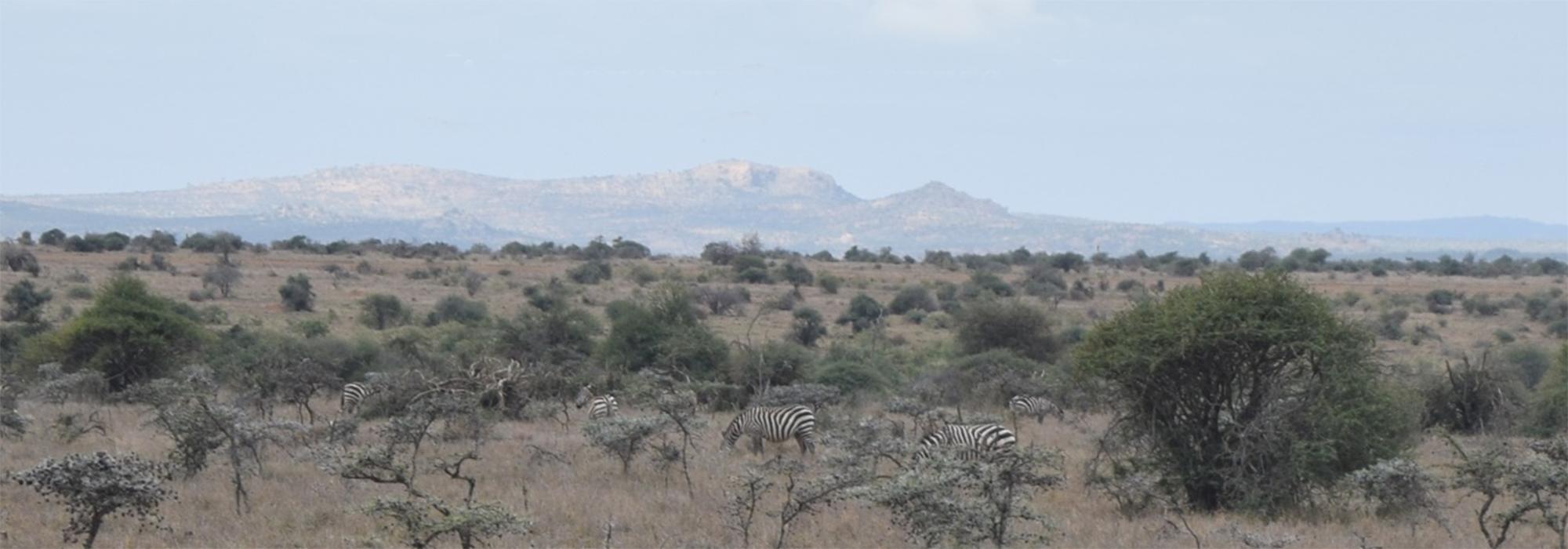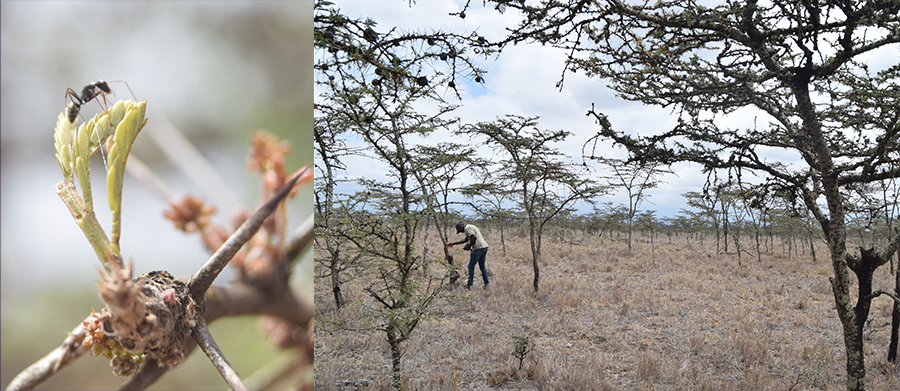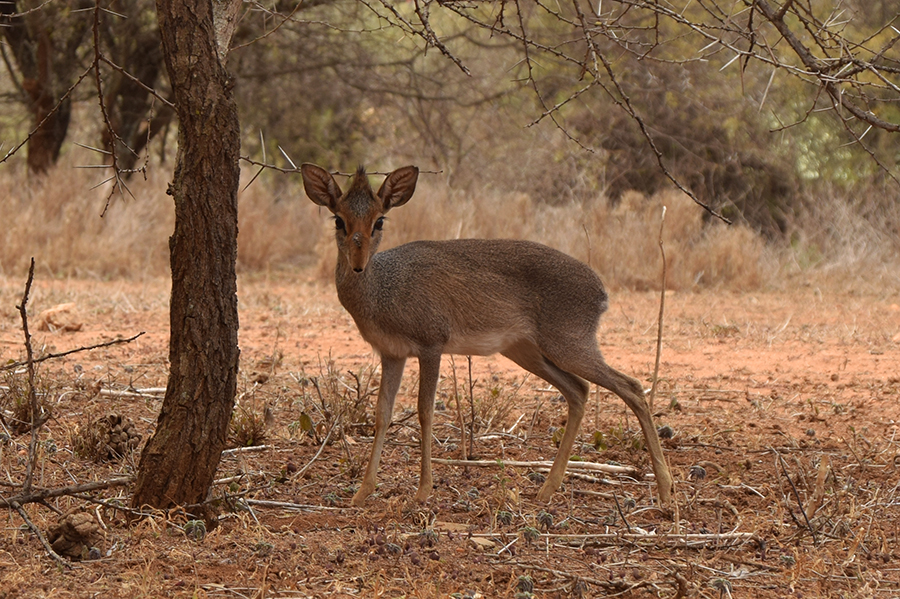
Report: A tropical ecology field course in Kenya, Summer 2022
From 10 August to 8 September 2022, Isobel Hawkins undertook a tropical ecology field course in Kenya, made possible thanks to a Gerry Grimstone travel award.
This course gave me an invaluable opportunity to gain experience in tropical ecology and conservation, and form a global network of friends and colleagues.
The course was run by the Tropical Biology Association, a skill-training NGO which runs courses to train early-career conservationists. For the duration of the course, we were based at Mpala Research Centre on the Laikipia plateau in north-central Kenya. The Mpala ranch comprises 49,000 acres of savanna, grassland habitats with scattered tree cover, and is maintained for native wildlife, including the endangered Grevy’s zebra, reticulated giraffe, and African elephants. Our course was focused on savanna ecology and conservation, making Mpala the ideal location to study.
Prior to the course, we were given access to an online platform of learning materials. These included podcasts, online lectures and activities to complete, including watching the live camera streams from different stations in the research centre: a particularly enjoyable task when elephants came into frame! This was good preparation for the course before we headed to Nairobi.
In Nairobi, I joined the other 23 course participants, from 18 different countries, and we drove six hours north, crossing back into the northern hemisphere before reaching Mpala Ewaso Ng’iro river camp, our home for the next month.
The first half of the course provided us with an introduction to key topics in savanna ecology, through a variety of practical exercises, with supplementary lectures in the evenings. These daily sessions allowed us to collect data and answer a research question, culminating in the presentation of results the following day: a great opportunity to gain practical experience in investigating these topics ourselves.
Particularly interesting was the visit to the KLEE Kenya Long-term Exclosure Experiment plots, established in 1996. Here, the effects of different herbivores (elephants, giraffes, antelope, cattle) on vegetation are investigated through exclusion of different subsets of these herbivores. In these plots, we were also able to observe for ourselves a topic focused on in the online component of the course: the fascinating symbiotic relationships of ant and acacia species. The ‘whistling thorn’ acacia (sp. drepanalobium) hosts ant species, which live in the swollen hollow thorns the tree produces. Producing these structures to house ants confers a benefit to the trees; the ants defend the trees against browsing by large herbivores.

We also had the opportunity to make behavioural observations of species within the camp vicinity, including the black-faced vervet monkeys which frequented the camp (and, sometimes, our tents!), and learning how to record and analyse spectrograms of bird calls. Occasionally we also managed to spot some of the larger mammals across the river from our camp, including the reticulated giraffe and endangered Grevy’s zebra, always exciting to see. Particularly memorable encounters included: watching a family of African elephants browsing opposite our tents; a rather inelegant and abrupt entry into the river by a hippo when it noticed us, and listening to a cacophony of Olive baboons screaming from the top of a Yellow fever acacia tree!
The course also had an environmental focus, as we collected freshwater invertebrates from two rivers, then used our samples to calculate an EPT index of water quality. This index is the proportion of the total invertebrates caught which are within the orders Ephemeroptera (mayflies), Plecoptera (stoneflies), and Tricoptera (caddisflies), three orders which are sensitive to water pollution and so provide good bio-indicators of water quality. Having a relatively simple, yet informative, way of measuring water quality is particularly useful, as this can be calculated by non-experts. One freshwater sampling day was especially notable, as we caught a dragonfly species never seen before in the area, an exciting find!

Each evening, we also had a presentation on ‘conservation in my country’ from every participant: with a cohort from eighteen countries, this was a fantastic way to broaden our knowledge of conservation across Europe and Africa. It was particularly interesting to see similarities and differences between the challenges and approaches taken to conservation in the UK and in other countries. Being able to discuss global conservation challenges and hear from so many different perspectives was a great insight into recognising how conservation has no borders: a hugely valuable experience.
A key strength of the course, and one of the most valuable aspects for me personally, was this ability to share insights and inspiration with so many people from such a diversity of countries. Aside from the presentations, we would often discuss our shared, and diverging, experiences with conservation around the campfire in the evening: not only did I learn about savanna ecology in Kenya, I heard stories of lion conservation in Tanzania, gained an insight into re-wilding experiments in the Netherlands, and heard the challenges of red kite monitoring in Germany and Sweden. Such discussions only enhanced the experience of the course, giving me a much wider perspective on conservation across the world.
After the first half of the course, we took a two-day excursion to Mount Kenya, the mountain after which the country is named. With a summit of 5,199m, Mt Kenya is the highest peak in the country and second highest on the continent, after Mount Kilamanjaro across the border in Tanzania. After a very early 5am start and beautiful view of the sunrise over the mountain, we drove up to 3,000m, before hiking up another 1,000m until the clouds started to obscure our view. Heading down, we chose to walk back through the forests on the lower slopes: a good decision, as we managed to spot colobus monkeys!

Following our trip to Mount Kenya (and a much-appreciated afternoon off!), we returned to the research centre to commence our own research projects. Working in small groups, we planned a week-long research project to answer a question based on the themes we had become familiar with through the first half of the course.
Our research question was within the animal behaviour theme, investigating whether habituation to humans affects the alarm response of Gunther’s Dik-dik, a common antelope in the region. We collected data over five days, making use of the recording software we had learned to use, creating sound files of predator calls and bird alarm calls, which were used in playback experiments on the Dik-diks. These experiments gave us an opportunity to observe the behaviour of individual animals in response to threat cues, which we then analysed, collaboratively writing a report in the form of a scientific paper. On the penultimate day, all research projects were presented, giving us an insight into the work everyone had conducted. With so many diverse questions, these were enjoyable to watch, and highly impressive in the amount achieved within a week-long project.

Overall, this course was a wonderful experience and invaluable exposure to tropical ecology. One of the most valuable aspects of this course was the recognition that tropical conservation is the field in which I would like to work, and I hope to build on the experience this course gave me, in future. It was a privilege to work with everyone on the course, the TBA, and the staff and researchers at Mpala. This was only made possible only through the generosity of the Gerry Grimstone travel grant, and I am very grateful to Merton and Sir Gerry Grimstone for this support.